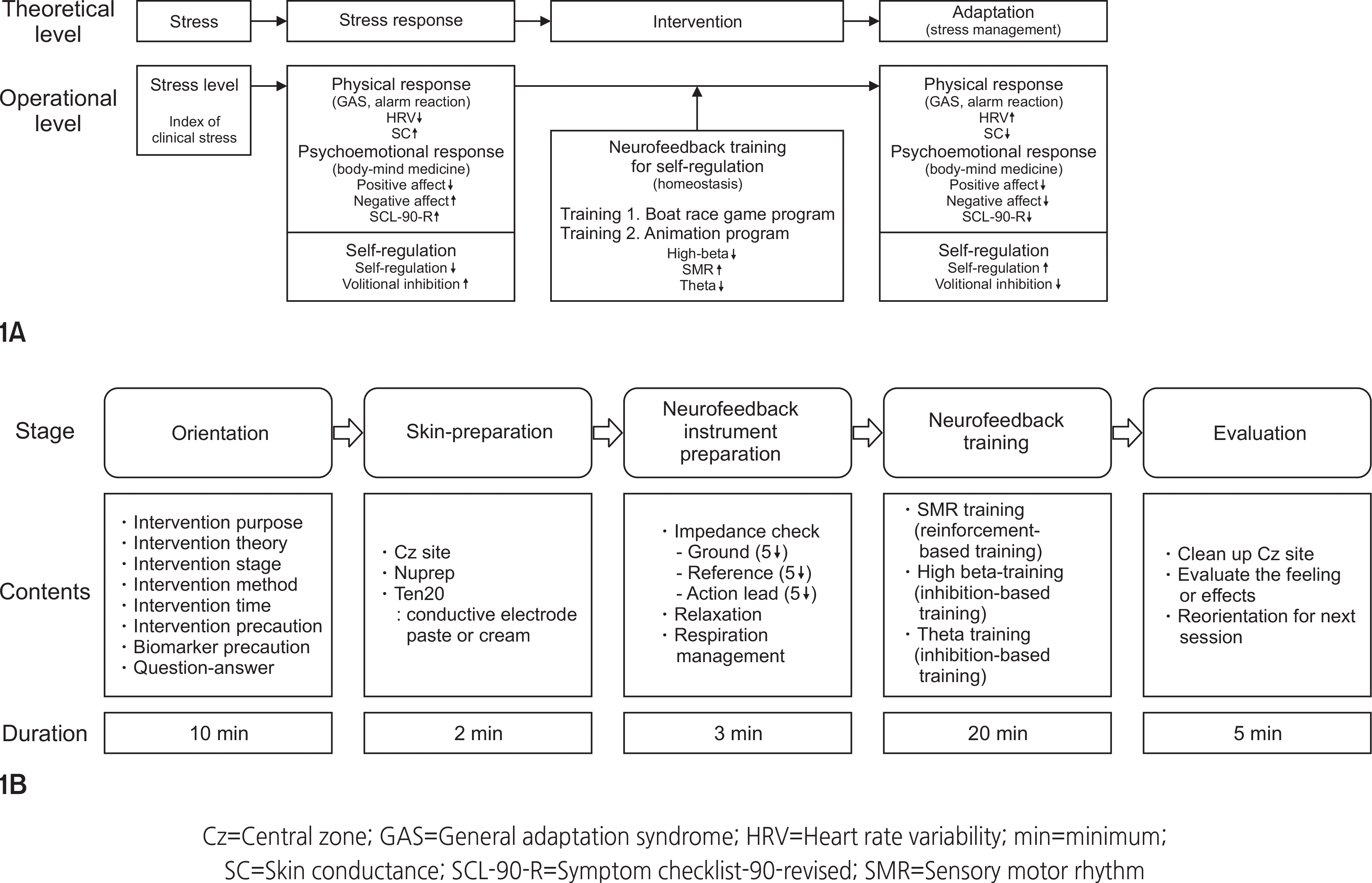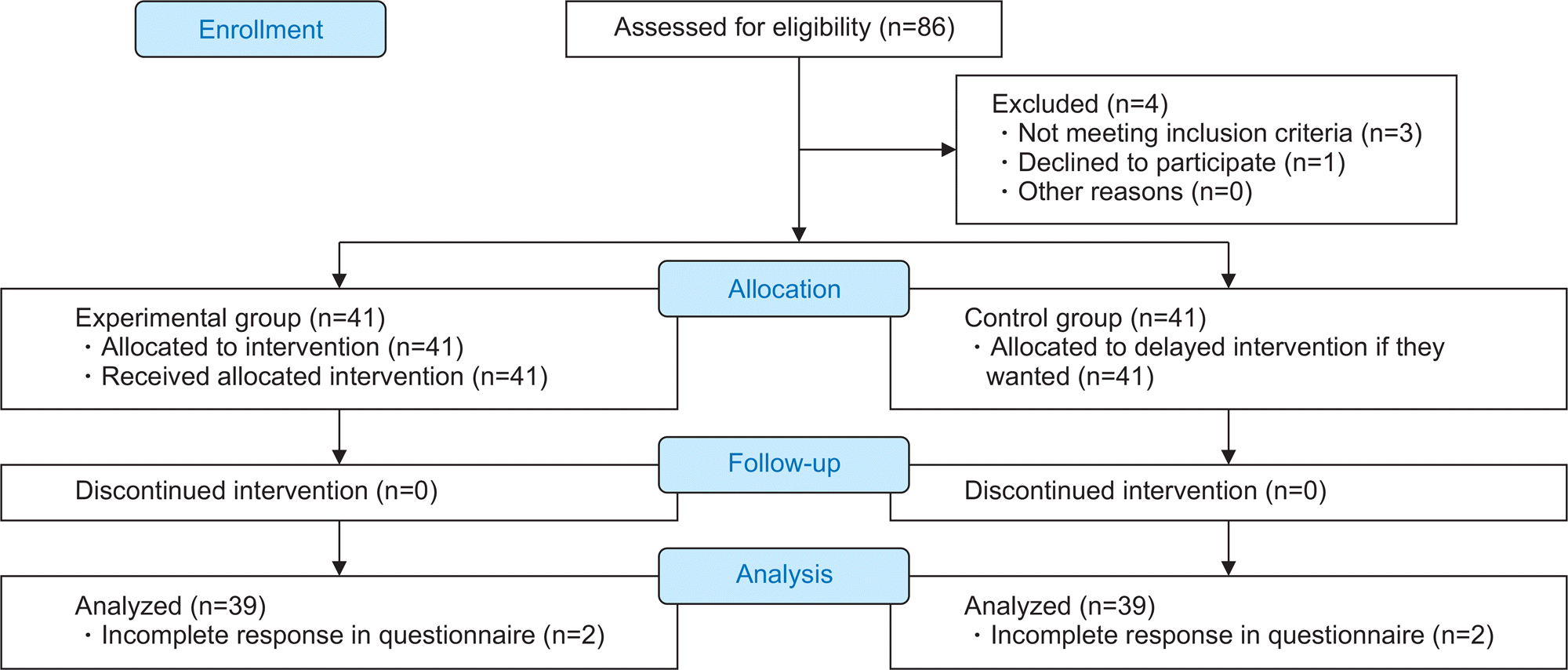1. Walker EF, Walder DJ, Reynolds F. Developmental changes in cortisol secretion in normal and at-risk youth. Development and Psychopathology. 2001; 13(3):721–732.

2. Hall GS. Adolescence. New York: Appleton and Company;1904. p. 81.
3. Rice VH. Handbook of stress, coping, and health: Implications for nursing research, theory, and practice. 2nd ed. Los Angeles (CA): Sage;2012. p. 1–588.
4. Statistics Korea. Health insurance review & assessment service [Internet]. Daejeon: Statistics Korea;c2017. [cited 2017 Apr 18]. Available from:. http://kostat.go.kr/portal/korea/index.action.
5. Korean Journal of Stress Research. Understanding about stress science. Seoul: Shinkwang;1997. p. 486.
6. Chang HK. Theoretical issues in mind-body medicine. Korean Association of Mediational Healing. 2010; 1(1):1–16.
7. Cheong MJ, Jo HI, Chae EY. Meta analysis on the effects of neuro-feedback training programme. Journal of the Korea Academia-Industrial Cooperation Society. 2016; 17(12):582–593. https://doi.org/10.5762/KAIS.2016.17.12.582.

8. Thompson M, Thompson L. The neurofeedback book: an introduction to basic concepts in applied psychophysiology. 2nd ed. Wheat Ridge (CO): Association for Applied Psychophysiology & Biofeedback;2015. p. 857.
9. Koberda JL, Koberda P, Moses A, Winslow J, Bienkiewicz A, Koberda L. Z-score LORETA neurofeedback as a potential therapy in depression and anxiety. NeuroConnections. 2014; Spring. 52–55.
10. Hammond DC. QEEG-Guided neurofeedback in the treatment of obsessive compulsive disorder. Journal of Neurotherapy. 2003; 7(2):25–52. http://doi.org/10.1300/j184v07n02_03.

11. Lee KH. A Study on how Neurofeedback system reduces stress level of employee [master’s thesis]. [Seoul]: Hanyang University;2016. p. 1–68.
12. Kum MH, Kang YM, Kim HK, Jung HS, Han MY. Study on brain function enhancement and the effects of stress reduction through neuro-feedback training on nursing students of Busan. The Korean Journal of Health Service Management. 2012; 6(2):111–119. http://doi.org/10.12811/kshsm.2012.6.2.111.

13. Selye H. Forty years of stress research: Principal remaining problems and misconceptions. Canadian Medical Association Journal. 1976; 115(8):53–56.
14. Barrows KA, Jacobs BP. Mind-body medicine. An introduction and review of the literature. Medical Clinics of North America. 2002; 86(1):11–31. https://doi.org/10.1016/S0025-7125(03)00069-5.

15. Abell N. The Index of Clinical Stress: A brief measure of subjective stress for practice and research. Social Work Research and Abstracts. 1991; 27(2):12–15. http://doi.org/10.1093/swra/27.2.12.

16. Oh SD, Kim SJ. The effects of modeumbook-play group music therapy program on the stress and self-esteem of university student. The Journal of the Research and Information Service. 2013; 13:81–90.
17. Kwon RH. The effects of biofeedback training on stress and academic resilience of the nursing students [master’s thesis]. [Seoul]: Seoul National University;2012. p. 1–71.
18. Watson D, Clark LA, Tellegen A. Development and validation of brief measures of positive and negative affect: The PANAS scales. Journal of Personality and Social Psychology. 1988; 54(6):1063–1070. http://doi.org/10.1037/0022-3514.54.6.1063.

19. Lee HH, Kim EJ, Lee MK. A validation study of Korea positive and negative affect schedule: The PANAS scales. Korean Journal of Clinical Psychology. 2003; 22(4):935–946.
20. Derogatis LR, Cleary PA. Confirmation of the dimensional structure of the scl-90: A study in construct validation. Journal of Clinical Psychology. 1977; 33(4):981–989. http://doi.org/10.1002/1097-4679(197710)33:4<981::aid-jclp2270330412>3.0.co;2-0.

21. Kim KI, Kim JH, Won HT. Korean manual of symptom checklist-90-revision. Seoul: Jung Ang Juk Sung Publisher;1984. p. 10.
22. Kuhl J, Fuhrmann A. Decomposing self-regulation and self-control: The volitional components inventory. Heck-hausen J, Dweck CS, editors. Motivation and Self-Regualtion Across the Life Span. 2nd ed. Cambridge: Cambridge University Press;1998. p. 48. http://doi.org/10.1017/cbo9780511527869.003.

23. Yoon YS. Self-regulation related variable of adolescent [dissertation]. [Seoul]: Sookmyung University;2007. p. 98.
24. Demos JN. Getting started with neurofeedback. New York: W. W. Norton& Company;2005. p. 1–280.
25. Collura TF. Technical foundations of neurofeedback. New york: Routledge;2014. p. 266.
26. Corrales MM, Torres BDLC, Esquivel AG, Salazar MAG, Orellana JN. Normal values of heart rate variability at rest in a young, healthy and active Mexican population. Health. 2012; 4(7):377–385. http://doi.org/10.4236/health.2012.47060.

27. Friedrich EVC, Courellis H, Tonnesen AL, Gevirtz R, Pineda JA. Is heart rate variability a predictor for neurofeedback effects? Müller-Putz G, Bauernfeind G, Brunner C, Steyrl D, Wriessnegger S, Scherer R, editors. Proceedings of the 6th international brain-computer interface conference; 2014 Sep 16-19. Graz: Graz University of Technology Publishing House;c2014. p. 88–91.
28. Goodman MS, Castro N, Sloan M, Sharma R, Widdowson M, Herrera E, et al. A neurovisceral approach to autism: Targeting self-regulation and core symptoms using neurofeedback and biofeedback. NeuroRegulation. 2018; 5(1):9–29. https://doi.org/10.15540/nr.5.1.9.

29. Ahn DH. Mental disorders in adolescents. Journal of Korean Medical Association. 2009; 52(8):745–757. https://doi.org/10.5124/jkma.2009.52.8.745.

30. Ahn SK. A study on the effect prefrontal lobe neurofeedback training on the primary student about selfregulation ability. Journal of the Korea Academia-Industrial cooperation Society. 2010; 11(11):4161–4166. https://doi.org/10.5762/KAIS.2010.11.11.4161.





 PDF
PDF ePub
ePub Citation
Citation Print
Print



 XML Download
XML Download